Communication in Practice
Having learned about the Communication Formula, let us now examine the parts of communication in practice. By practice, we mean the actions of doing something, as opposed to the thoughts, ideas or plans.
In the subject of communication, we have what we call a “cycle of communication.” Cycle means the steps that are taken from the beginning to the end of some action. For example, you could say the cycle of growing a tree is as follows: (a) plant a seed, (b) give it some water, (c) as soon as it starts to grow, give it some sunshine and (d) keep watering it until it grows into a plant or tree.
Let’s take an example of two people talking to each other. To keep it simple, let’s just call the two people A and B. There is a cycle of communication where A says something to B, B understands and duplicates what A said and then B acknowledges A. A receives the acknowledgment and knows that he was heard and understood. That is a cycle of communication.
Now let’s examine what happens when a true communication takes place. There are parts of the communication cycle that must be included for it to be a good communication.
As we learned in the Communication Formula, we need to have Intention and Attention, as well as Duplication, for a good communication to take place.
In the first example shown in the illustration below, we have A’s Intention. A must first intend to send the communication to B. When this happens, B has to have his Attention directed to what is going to be said so he hears it.
To be a true communication, Duplication by B must take place of the message that came from A. Let us say that A says, “ That is a red car.” B must duplicate what was said and not think that A had said, “ That is not very far.”
A, of course, to start and deliver a communication, must have given Attention originally to B. And B must have given some Intention to this communication, at least to listen or receive.
So we have both Cause (A) and Effect (B) having Intention and Attention.
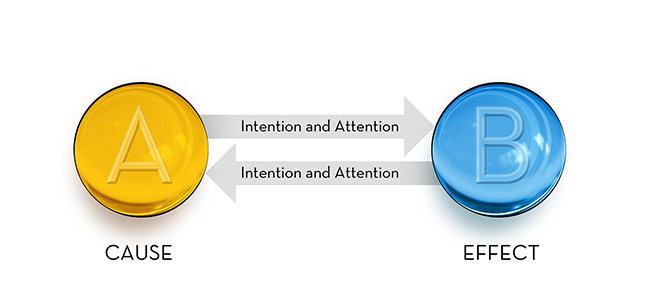
The other part of this that is very important is Duplication. We can also call this “agreement.”
The amount of agreement there is between A and B in the communication example given above shows how much they agree with each other.
Let us take an example of two people talking about music that they both like. There is strong duplication and lots of agreement to begin with and they can easily follow one another while communicating about songs they like and listen to.
But take, for instance, a man who has lived all his life in a desert and has never seen the sea or a lake. Someone talking to him about the adventures experienced in a small boat on a stormy sea would have difficulty getting a duplication of what was being said, as the desert man has never even seen the ocean. The two people would not share an agreement until perhaps the desert man was shown a picture of the sea or, even better, a film or video of it.
So we get the rule that B, as Effect, must Duplicate what was said by A, as Cause, even if it is just a little bit, to make it possible for the first step of the cycle of communication to take place.
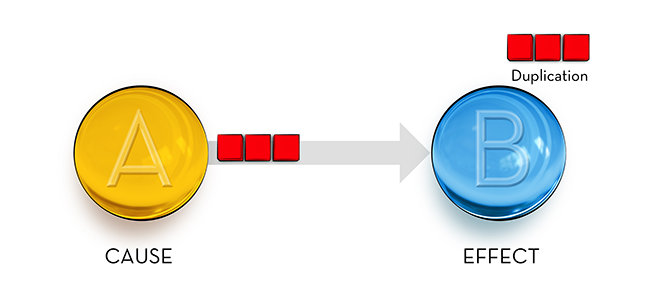
When B understands what A said and gives him an acknowledgment, then A becomes the Effect and must Duplicate what came from B for the communication to be concluded. If this is done, it is likely that A and B will get along well.
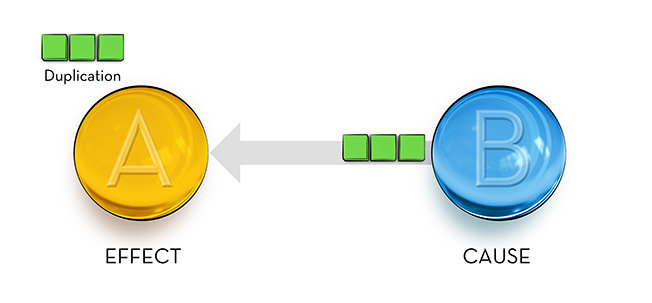
Taking the above example, let us say you showed the man from the desert some pictures and even a short film of the sea. You could then bring about a Duplication of what you were talking about and be able to carry on a communication with him, describing how the wind can make the water move in waves, just like the wind can make the desert sands shift about. He gets this and says, “Okay, I understand.”
If this Duplication does not take place by B and then again by A, then the cycle of communication remains incomplete.
If, for example, B does not Duplicate what is said by A at all, the first step of the Communication Formula is not achieved and a great deal of explaining and arguing might happen.
Let’s say the man in the desert thinks you are talking about a camel when you tell him how you had sailed a boat in the sea and that the boat sways from side to side. Let’s say he does not Duplicate you at all. So when you tell him you could just tie up the boat and leave it there when you are done and never have to feed it or water it (as he has to do with his camel every day when he is done riding it), he might get upset and try to find out how it could stay alive without proper care.
Then, if A does not Duplicate what is said by B, when B is Cause and talking to A, this would bring about the same problem and make the cycle of communication incomplete. And, once again, there will be missing Duplication.
For example, the desert man starts talking to the person about the different types of sand in the desert when the person knows nothing about the subject and has never even seen a desert.
When all the steps of the cycle of communication are complete, it will result in both A and B understanding each other and getting along well. But if steps are left incomplete, we will have either A or B, or both, waiting for the steps to be completed. In this way, the communication becomes upsetting and harmful.
For example, if you were to ask someone what time it was and the person never answered you, you would feel upset at not being able to complete the cycle of communication.
Unfinished steps of the cycle of communication bring about what might be called “answer hunger.” A person who is waiting for a signal that his communication has been received will start to accept any communication coming to him. When a person has waited a very long period of time for answers which do not arrive, any sort of answer, from anywhere, will be accepted by him as an effort to make up for not having answers.
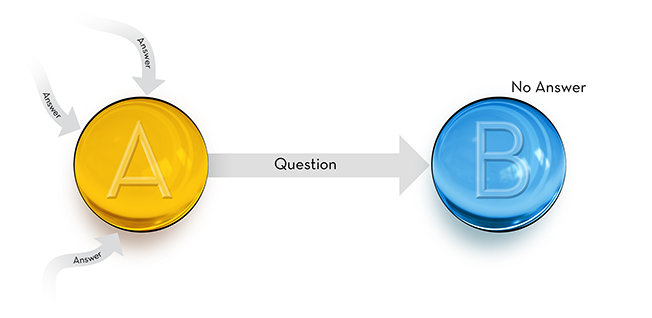
So in good communication, it is important to always complete the cycle of communication and include each of the parts of the Communication Formula.
But it can also cause an upset when an answer is given that has nothing to do with what is being talked about, such as when someone is just chattering or yakking continuously or when no answer is given at all. Imagine if you ask the person what time it is and he says it is too hot and he feels uncomfortable.
Communication itself is harmful only when the communication coming from Cause is sudden and has nothing to do with what is happening or being discussed at the time. When this happens, two parts of the formula, Attention and Intention, are being ignored.
An example of this could be when you are talking to a group of people about how beautiful the field looks with all the flowers and trees and suddenly one of the people in the group starts complaining about the rise in the price of oil and how expensive it is to drive his car.
“Interest” is also an important part of communication. Interested means you are paying attention to something. Interesting means you are doing things to get and hold someone’s attention.
In a good communication, A is interested and has the Intention of interesting B. B, to be talked to, becomes interesting. Similarly, B, when he communicates, is interested and A is interesting. Here we have, as part of the Communication Formula—but a less important part—the continuous change by both A and B from being interested to being interesting.
Cause is interested. Effect is interesting.
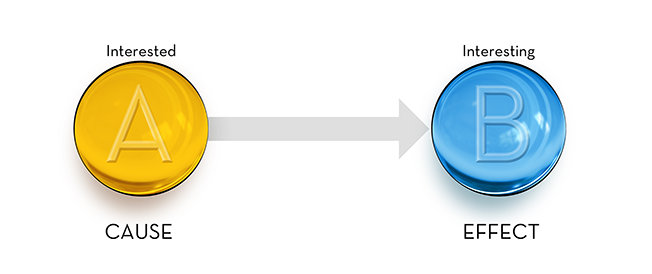
Of some greater importance is the fact that A’s Intention to be received by B makes it necessary for A to be Duplicatable (able to be duplicated). If A cannot be Duplicatable at all, then of course his communication will not be received by B, because B, unable to Duplicate A, cannot receive the communication.
As an example of this, let us say A speaks in Chinese, but B can only understand French. It is necessary for A to make himself Duplicatable by speaking French to B, who only understands French.
Or, for example, if you were talking to a young person to explain to him how something works, you might use simple words and even pieces of an object or sketches (simple drawings) so he could follow along and duplicate what you are saying.
In summary, if all the parts of the Communication Formula are included and the cycle of communication itself is completed, you have good communication and you will be understood by others. This is the route to increased happiness and success.
And remember, a man is as dead as he can’t communicate. He is as alive as he can communicate.

